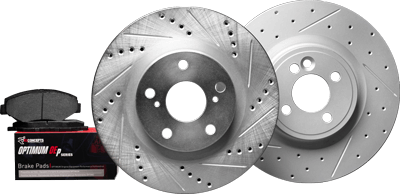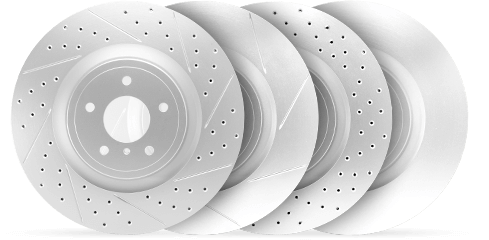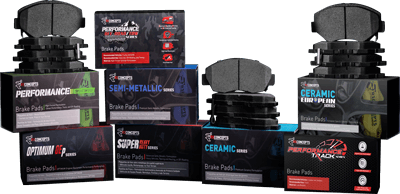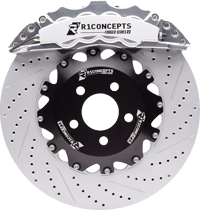If you are wondering how to choose brake pads for your vehicle, visit R1 Concepts online today. View our tips and tricks for choosing the right brake pads here! Nowadays, we have ceramics, semi-metallic, organic, and metallic formulations. Choosing the best combination for your vehicle isn’t always clear as black and white. Here are some tips on how to choose brake pad material for your vehicle.
What you would want to consider is the type of use your vehicle is doing, what type of vehicle you have, and of course, your budget. Are you using it as a daily commuter or does it see lot of track time on race tracks? For most of us, daily commuting is what we do most with our cars. If this is the case, ceramic and organic compound brake pads would be ideal. Ceramic compounds are great because they generally do not require warm ups. With the hustle and bustle of the modern world, who can stop and think about brakes. It just needs to work. Without the need to warm up, you can get instant stopping power.
Ceramic compound brake pads produce minimal brake dust with minimal noise operation. Those with fancy and expensive wheels, one can rejoice because their wheels will stay a lot cleaner with ceramic pads. Like all brake pads, there are downsides. Ceramic pads can fade at very high temperatures reducing performance. However, with today’s technology, ceramic mixtures with different types of fibers have reduced fade dramatically? There are also organic pads that are constructed, like its name suggests, organic materials such as carbon and kevlar. These pads are great if you are looking for low noise. If you’re in a pinch and money is an issue, organic pads are something to think about because they are fairly inexpensive.
If you use your vehicle for recreational fun at the tracks, semi-metallic or metallic would be ideal. This type of compound will offer superior stopping power. However, semi-metallic and metallic pads will need to warm up to certain temperature ranges to perform at their potential. Another drawback with metallic base pads is that they produce quite a bit of dust. They have higher noise level and also have a higher chance to score the brake discs.
You will also want to consider the wear characteristics of the pads you are getting. Simply put, this is how much life you are getting from the set of pads or the rate at which the pads are breaking down over time. If you are looking for longer life or better wear, choose pads that are ceramics or have ceramic materials. Of course there are drawbacks for having longer life. The drawback will be braking performance. It’s a give-and-take relationship. So a general rule is, longer life equals less performance and shorter life equals better performance (not always the case but the majority and typical). The exceptions are the organic pads. Organic pads have the worst life of all the compound types and do not perform as well as ceramics are semi-metallic. The reason ceramic base pads offer better life is because they are made denser with other fibers added as oppose to semi-metallic, which are less dense.
Once you get idea of the compound you might want, shop around and compare. There are literally hundreds of brands and options on the market. Shopping for brakes online is a great way to save. Generally, physical retail stores will have brake pads a bit higher in price than online stores because of their different business structure. (No need for details since this is not an economics lesson). Using a pad type that came originally from the factory is a good choice because generally they are the most affective. If you do not know what type your original pads are, you can always contact your local dealership to see what came originally. R1 Concepts offers a great selection of low dust/low noise ceramic pads as well has semi-metallic pads, ultra high performance race proven street pads, and even OEM factory brake pads.









